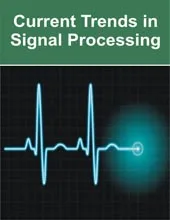
Kalpesh Patil

Jayesh Umap

Yash Rathor

P.P Gaikwad
- Student, Department of Electronics & Communication Engineering, Gaytri Nivas, Pune , Maharashtra, India
- Student, Department of Electronics & Communication Engineering, Gaytri Nivas, Pune , Maharashtra, India
- Student, Department of Electronics & Communication Engineering, Gaytri Nivas, Pune , Maharashtra, India
- Assistant Professor, Department of Electronics & Communication Engineering, Gaytri Nivas, Pune , Maharashtra, India
Abstract
In the current competitive world, one of the most familiar and grave mental illness we encounter in humans is Depression also called as major depression or major depressive disorder. It makes you feel depressed and disinterested all the time, which has a bad impact on your thoughts and behaviour. Thus affecting not only the victim but also people associated with them, such as family, friends and society. If not treated properly, it can end up with adverse actions such as suicide or hurting others. Therefore, it is very essential to detect such people and provide them with the necessary required treatment. With advancements in Artificial Intelligence and Deep Learning, Facial Emotion Recognition has always been in focus. Through the facial expression, we can detect the emotions of a person. Convolutional Neural Network (CNN) method will be used to recognize facial expressions in real time from picture frames in video data. The video input will be taken through an external camera module fitted on the ESP32 chip. Image pre-processing will be done for better feature (expression, emotions) extraction. This processed images will be then sent into a deep learning model which predicts whether the facial expressions indicate depression. Depending on whether the Depression is detected or not, a message will be sent to that particular person and also to their well-wishers.
Keywords: Emotion detection, Convolutional Neural Network (CNN), deep learning, tensor flow, Depression, Emotion Recognition Model (EMR).
[This article belongs to Current Trends in Signal Processing(ctsp)]
References
Healthline media, what percentage of people have depression? retrieved from https://www.healthline.com/health/baby-blues-vs-postpartum-depression#faq
[2] BetterHealth Channel, Depression explained, (2024) retrieved from (Available)https://www.betterhealth.vic.gov.au/health/conditionsandtreatments/depression
[3] F. A. Nazira, S. R. Das, S. A. Shanto and M. F. Mridha, “Depression Detection Using Convolutional Neural Networks,” 2021 IEEE International Conference on Signal Processing, Information, Communication & Systems (SPICSCON), Dhaka, Bangladesh, 2021, pp. 9-13, doi: 10.1109/SPICSCON54707.2021.9885517.
[4] Y. Zhu, “Automatic Depression Recognition Using Multi-scale Facial Behavior Dynamics,” 2022 IEEE 2nd International Conference on Information Communication and Software Engineering (ICICSE), Chongqing, China, 2022, pp. 88-93, doi: 10.1109/ICICSE55337.2022.9828962.
[5] K. J. Kantharia and G. I. Prajapati, “Facial Behavior Recognition Using Soft Computing Techniques: A Survey,” 2015 Fifth International Conference on Advanced Computing & Communication Technologies, Haryana, India, 2015, pp. 30-34, doi: 10.1109/ACCT.2015.132.
[6] W. C. de Melo, E. Granger and A. Hadid, “A Deep Multiscale Spatiotemporal Network for Assessing Depression From Facial Dynamics,” in IEEE Transactions on Affective Computing, vol. 13, no. 3, pp. 1581-1592, 1 July-Sept. 2022, doi: 10.1109/TAFFC.2020.3021755.
[7] M. M.Kabir, A. Q. Ohi, M. S. Rahman and M. F. Mridha,“An Evolution of CNN Object Classifiers on Low-Resolution Images,” 2020 IEEE 17th International Conference on Smart Communities: Improving Quality of Life Using ICT, IoT and AI (HONET), 2020, pp. 209-213, doi: 10.1109/HONET50430.2020.9322661.
[8] Mollahosseini et al., AffectNet: A Database for Facial Expression, Valence, and Arousal Computing in the Wild, (2024) Retrieved from https://paperswithcode.com/dataset/affectnet
[9] Krause FC, Linardatos E, Fresco DM, Moore MT. Facial emotion recognition in major depressive disorder: A meta-analytic review. Journal of affective disorders. 2021 Oct 1;293:320-8.
[10] Aditya Mittal,Haar Cascades Dec 20, 2020, A general representation of training a Haar classifer, retrieved from https://medium.com/analytics-vidhya/haar-cascades-explained-38210e57970d
[11] Anderson IM, Shippen C, Juhasz G, Chase D, Thomas E, Downey D, Toth ZG, Lloyd-Williams K, Elliott R, Deakin JW. State-dependent alteration in face emotion recognition in depression. The British Journal of Psychiatry. 2011 Apr;198(4):302-8.
[12] Jason Brownlee,A Gentle Introduction to the Rectified Linear Unit (ReLU), August 20, 2020 retrieved from https://machinelearningmastery.com/rectified-linear-activation-function-for-deep-learning-neural-networks/
[13] Akhapkin RV, Volel BA, Shishorin RM, Ustyuzhanin DV, Petelin DS. Recognition of facial emotion expressions in patients with depressive disorders: A prospective, observational study. Neurology and Therapy. 2021 Jun;10:225-34.
[14] Visual Studio Code, Setting up Visual Studio Code, retrived from
https://code.visualstudio.com/docs/setup/setup-overview

Current Trends in Signal Processing
| Volume | 14 |
| Issue | 01 |
| Received | April 1, 2024 |
| Accepted | May 23, 2024 |
| Published | June 14, 2024 |

